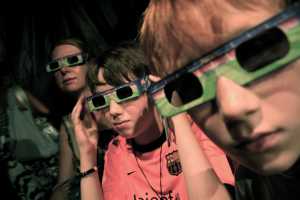26 Nov Virtual Reality Lets Users Walk Over Cellular Landscape
MedicalResearch.com Interview with:
 Professor Robert G. Parton FAA
Professor Robert G. Parton FAA
Institute for Molecular Bioscience,
University of Queensland
Brisbane, Australia
MedicalResearch.com: What is the background for this study? What are the main findings?
Response: We have combined whole cell microscopy with image analysis and virtual reality visualization to allow a user to explore the surface of a cancer cell and then to move inside the cell and interact with the organelles vital for cellular function. The study utilized serial blockface electron microscopy data of a migratory breast cancer cell (combining thousands of electron microscopic images into one 3D dataset) together with to-scale animations of endocytic processes at the cell surface. Through the use of low-cost commercial VR headsets, the user could then ‘walk’ over the alien landscape of the cell surface, observe endocytic processes occurring around them in real-time, and then enter a portal into the cell interior. We provide guidelines for the use of VR in biology and describe pilot studies illustrating the potential of this new immersive experience as an educational too
MedicalResearch.com: What should clinicians and patients take away from your report?
Response: Electron microscopy has traditionally relied on flat, 2D images to build up a picture of the ultrastructure of cells and tissues. However, recent advances now allow researchers to study cells, tissues, and even whole organisms in 3D at the electron microscopic level. The use of virtual reality headsets allows the user to explore these datasets in 3D in a fully immersive interactive manner. This has immediate benefits in education and in outreach to the general public but we also envisage that these new visualization methods will be used by researchers to explore their data and to test new hypotheses in an interactive 3D space.
MedicalResearch.com: What recommendations do you have for future research as a result of this study?
Response: With the development of new methods to identify proteins within whole cells, we anticipate that we may soon be able to quantitatively map those proteins in a 3D interactive cell model. We can then simulate how these molecules would move within different cellular compartments, such as the cytosol, the nucleus, or within the membrane of a particular organelle, model their interactions with other proteins, probe the effects of mutations, and build up working models of entire complex systems which can be studied and challenged in virtual space.
No disclosures
MedicalResearch.com: Thank you for your contribution to the MedicalResearch.com community
Citation:
Angus P.R. Johnston, James Rae, Nicholas Ariotti, Benjamin Bailey, Andrew Lija, Robyn Webb, Charles Ferguson, Sheryl Maher, Thomas P. Davis, Richard I. Webb, John McGhee, Robert G. Parton. Journey to the centre of the cell: Virtual reality immersion into scientific data. Traffic, 2017; DOI: 10.1111/tra.12538
Note: Content is Not intended as medical advice. Please consult your health care provider regarding your specific medical condition and questions.
[wysija_form id=”1″]
Last Updated on November 26, 2017 by Marie Benz MD FAAD
